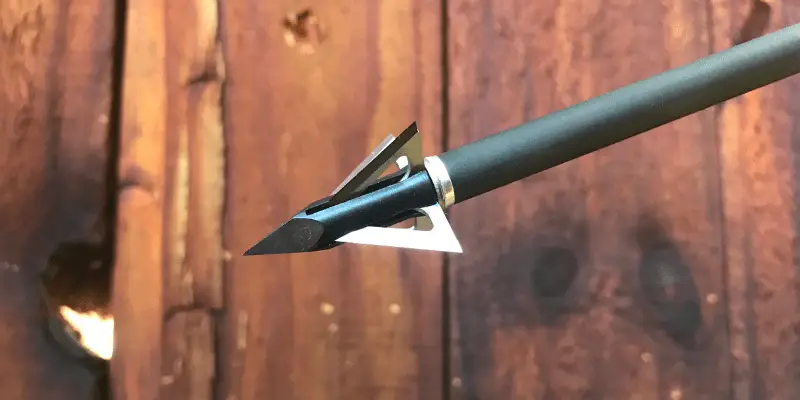Can’t decide which broadhead to choose? You might have found too many similarities between vented and solid ones and get yourself confused again, don’t you?
Well, we can help you out from here.
So, what are the key differences between vented vs non vented broadheads? The key difference indicates noise issues during the flight. While vented broadheads produce a hissing sound in the air, non-vented or solid ones fly in silence. You might find solid broadheads penetrating better. Moreover, robust and durable broadheads mostly belong to the vented type.
Well, that’s not everything we wanted to discuss. Throughout this article, we will be unfolding everything one by one. So, let’s get started!
Vented vs Non Vented Broadheads: A Quick Glimpse
Both broadheads might be good enough from their own perspective. However, to have a quick overview, simply look at the table below.
| Compared Factors | Vented Broadheads | Non-Vented Broadheads |
| Build Quality | Robust and durable | Average |
| Ferrule Type | Stainless steel ferrule | Titanium 5-grade ferrule |
| Penetration Quality | Average | Better |
| Flight | Better | Average |
| Noise Issue | Too much noise | Very quiet or noiseless |
| Weight | Average weight | Heavier |
Caught anything special from the list? Keep them remembering! By the end of this article, you will get the whole picture.
Vented vs Non-Vented Broadheads: Detailed Comparison
It’s time to get introduced to the core parts. Yes, you will get to see an expanded discussion on different factors.
Build
Solid or non-vented broadheads come stronger in nature. Look, they do not contain any grid styles on heads just like the vented ones. In the meantime, constructed with solid steel makes them more durable and robust.
Usually, they get a titanium-based 5-grade ferrule. Unlike this, vented broadheads contain a stainless steel ferrule. If you compare them closer in terms of steel choices, vented broadheads might stay a bit ahead of the solid ones.
Noise Issue
Vented broadheads along with helical fletching are quite noisy. More particularly, they hiss or whistle around targets. So, there are fewer chances of not getting caught by your targeted animals.
However, many users have identified this issue as minimal and risk-free while hunting. Specifically, noise can go up to 45 to 50 decibels.
But here’s a quick observation-
While attempting to hunt within a shorter distance, this noise is inevitably noticed. Besides, non-vented or solid broadheads can do your job very quietly.
Yes, it’s true that crosswinds are often visible through non-vented broadheads. As a result, some noise might get produced due to the spinning movement.
But you can count it negligibly as zero. At least this noisy condition is very low compared to the vented broadheads.
Penetration
Solid broadheads carry an exceptional blade design. As an end product, greater penetration seems to be achieved through them.
And, getting flights like field points is a regular event from non-vented broadheads. Hitting harder to the target makes it more effective.
You know what? Penetrating more than 0.08 inches thick steel plate can be done via particular non-vented broadhead models. Interestingly, you will not find any damage to your blade edges. Quite robust, isn’t it?
A couple of patterns you might explore include a chisel point design. This design is adopted by vented broadheads. Yes, chisel tips might deliver better under less pressure and workloads.
Once you break all limits during hunting, it might not be the best fitting anymore. On the other hand, Cut-On-Contact points mostly outperform chisel points.
So, chisels might be durable but no more a better performer in penetrating compared to non-vented broadheads.
Flight
What’s going on with the penetration skills, you already have got a gist. However, vented broadheads will fly better. In other words, this type of broadhead is more forgiving.
You might get confused thinking about how vented broadheads carry better flights. Wondering how it can be possible while having inferior penetration quality than the non-vented broadheads, right?
The reality is, there is no direct correlation between these two factors.
- Vented Vs Non-Vented Broadheads: Difference And Winner
- Longbow Vs Recurve Vs Compound: Get All Differences!
- Sevr Broadheads Vs Rage: Differences & Winner!
Winner
Standing with a particular broadhead type might be an injustice! Look, they both have got similar traits that you can’t easily differentiate with the naked eye. However, air noise issues might cause vented ones to fall behind a bit.
But in terms of flight and build quality, vented broadheads have to offer a lot. Besides, non-vented broadheads come with excellent penetration quality.
FAQs
What are the key differences between the solid series and the vented series?
Vented broadheads having the capability of flying better slightly shows the key difference between the v-series and s-series. Besides, solid broadheads bring more durable heads compared to vented ones.
On the other hand, vented broadheads might create noise. Staying quiet is the best feature of the non-vented or solid broadheads. If there’s any crosswind ongoing, non-vented might not drive through the air for longer.
How can I use the Tooth of the Arrow sharpener?
Pushing the broadhead and applying even and firm pressure are the best way to use the tooth. And, heat-treated broadheads might take many passes per blade.
Utilizing some honing oil gets the broadhead working better. And, the blades get an additional coat if you use oil.
Should I paper-tune with broadheads?
If you particularly screw in fixed-blade broadheads, your broadheads might fly differently than the field points.
Paper tuning with your broadheads indicates a flying issue that is different from the field points. As tuning via paper indicates the problem, you will be attaining optimal arrow flights.
Can my broadhead go through ribs?
Yes, if you carry a broadhead-tipped arrow with average velocity, it will be enough to break through and stab the chest hollow.
And with the help of advanced bowhunting equipment, sufficient energy gets managed by the arrow to pass successfully through ribs.
Final Words
That will be all for the vented vs non-vented broadheads.
Now, you know which broadhead type matches your priority, hunting situation, etc. Hopefully, you will make your next broadhead purchase ideal.
With that note, we put an end to our exploration here. See you soon!

